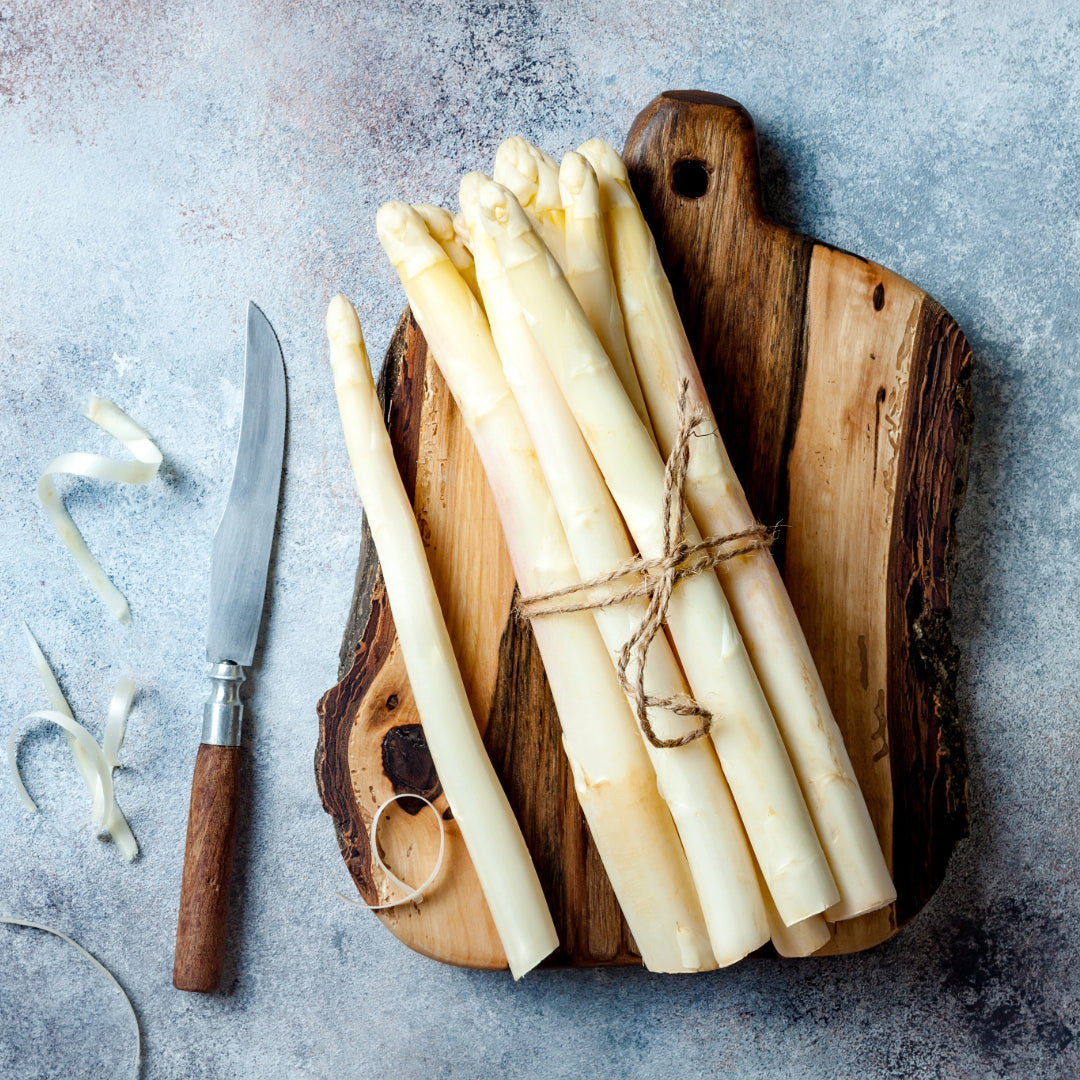
The Asparagus Season Begins!
The arrival of asparagus season is a delightful sign that spring is in full swing. This versatile and nutritious vegetable is not only appreciated for its unique flavor but also for its health benefits. In this article, we'll delve into the most common varieties of asparagus, their nutritional benefits, the rich tradition surrounding their cultivation and consumption in Spain, and how they are grown.
Varieties of Asparagus
Green Asparagus (Asparagus officinalis)
These are the most popular and widely available asparagus. They have a vibrant green color and a slightly bitter taste. They can be cooked in various ways, such as grilling, steaming, or sautéing.
White Asparagus
Also known as Navarra white asparagus in Spain, they are cultivated by burying the stalks to prevent exposure to sunlight, giving them their characteristic pale white color. They have a mild and delicate flavor, perfect for more refined dishes.
Depending on the region and product grading practices, there are some categories based on the thickness:
- Thin
- Medium
- Thick
- Extra Thick
Purple Asparagus
This less common variety has an intense purple hue and a flavor similar to green asparagus but with slightly sweeter undertones. They are a visually stunning addition to any dish.

Purple Asparagus, Green Asparagus and White Asparagus.
Nutritional Benefits of Asparagus
Asparagus is an excellent source of essential nutrients for health, including:
- Fiber: Promotes digestive health and helps maintain healthy cholesterol levels.
- Vitamins and Minerals: Rich in vitamin K, folic acid, vitamin C, potassium, and antioxidants, which are important for bone health, cellular function, and the immune system.
- Low in Calories: An ideal choice for those seeking low-calorie but nutrient-dense foods.
How Asparagus is Cultivated
Asparagus is a perennial plant grown from crowns (roots). They are planted in deep, well-drained furrows, preferably in sandy or loamy soils. Planting depth is crucial for good development; crowns should be placed at least 15-20 cm below the soil surface. During the growing season, asparagus requires regular watering and mulch cover to retain soil moisture and prevent weeds.
Harvesting asparagus is done by hand, cutting the shoots when they reach approximately 15-20 cm in height. It's essential not to harvest too close to the crowns to allow the plant to recover and continue producing throughout the season.

Asparagus harvest.
Spain's Asparagus Traditions
In Spain, the asparagus season is eagerly awaited, especially by gastronomy enthusiasts. Regions like Navarra are known for their high-quality white asparagus, celebrated with festivals and culinary events.
Asparagus is used in a wide variety of traditional Spanish dishes, such as: "tortilla de espárragos" (a version of the classic Spanish omelet with asparagus), "espárragos a la brasa" (grilled asparagus with seasonings), and "crema de espárragos" (a creamy and comforting soup).
- Grilled Asparagus: Simply grilled asparagus with a drizzle of olive oil and salt.
- Asparagus with Romesco Sauce: Cooked asparagus served with romesco sauce, a Catalan sauce made from tomatoes, peppers, almonds, and garlic.
- Scrambled Asparagus: Asparagus chopped into pieces and scrambled with eggs and often other ingredients like mushrooms or shrimp.
- Gratinéed Asparagus: Baked asparagus covered with béchamel sauce and grated cheese, then broiled until golden and crispy.
- Asparagus with Jamón Ibérico: Asparagus wrapped in serrano ham and then roasted or grilled.
- Asparagus Salad: Cooked asparagus served cold in a salad with other ingredients like tomato, hard-boiled egg, and vinaigrette.
- Asparagus Cream: A creamy and comforting soup.
These are just a few examples, but the versatility of asparagus lends itself to use in a variety of traditional and modern Spanish dishes.


